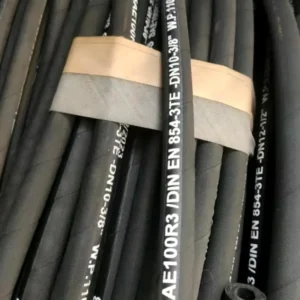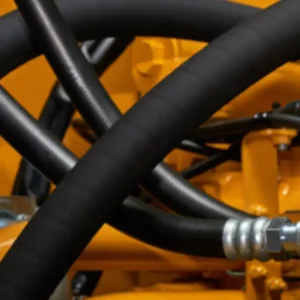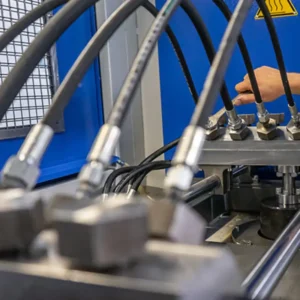As a professional supplier of pressure washer hoses, we understand the importance of properly connecting the hose to both equipment performance and user safety. While many may find this simple, failing to master the correct methods and techniques can easily lead to leaks, pressure loss, and even equipment damage.
In this article, we’ll share our years of experience and provide a detailed, top-to-bottom explanation of how to correctly and safely connect your pressure washer hose, ensuring optimal cleaning results every time.
Understanding Your Pressure Washer Hose Components
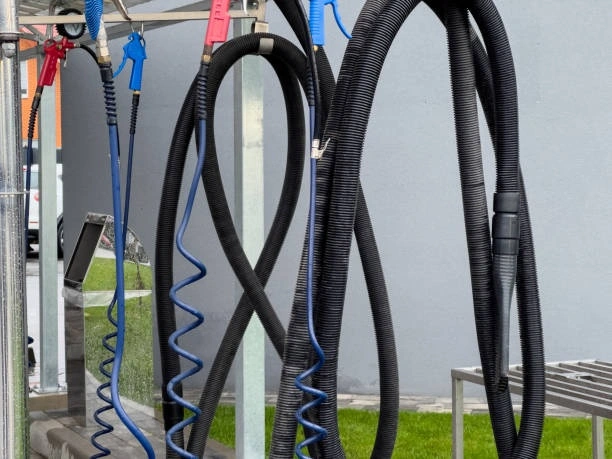
Before we dive into the “how-to,” let’s get acquainted with the key components that make your pressure washer system work. Knowing these parts is crucial for a secure connection and helps you quickly identify any issues.
- Pressure Washer Hose: This is the main line carrying pressurized water from the machine to the gun. Our hoses are built with durable, high-strength materials to withstand extreme pressure and resist kinking, ensuring a steady, uninterrupted flow.
- Pressure Washer Gun & Wand: The handheld parts you use to direct the water spray. The hose connects directly to the base of the spray gun, which then attaches to the wand and nozzle.
- Hose Fittings & Adapters: These are the connectors that bridge the different components. The most common type is the threaded M22 fitting, but many modern systems now use quick-connect fittings. We stock a wide variety of adapters to help you connect different hoses and machine types seamlessly.
- O-Rings & Washers: These small rubber seals are absolutely critical for preventing leaks. They create a watertight seal at every connection point. We can’t stress this enough: check and replace your O-rings regularly.
Step-by-Step Guide: How to Connect Pressure Washer Hose
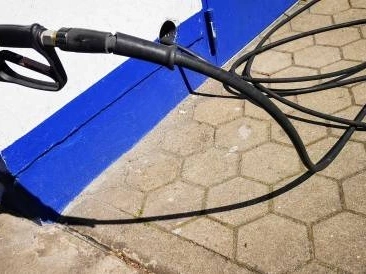
Connecting your pressure washer hose is a straightforward process, but following the correct sequence is key to avoiding issues. We’ve broken it down into simple, easy-to-follow steps. Whether you’re a first-timer or just need a quick refresher, this guide will walk you through the entire process, from setting up the water supply to connecting the hose to your machine and accessories.
Step 1: Connecting the Garden Hose to Your Pressure Washer
This is the first point of connection and a critical one for ensuring a steady water supply. A proper seal here prevents air from being sucked into the pump, which can cause damage.
- First, ensure your garden hose is free of kinks and debris.
- Locate the water inlet on your pressure washer. It’s usually a threaded fitting.
- Screw the end of your garden hose onto the inlet. Make it hand-tight. Do not overtighten, as this can strip the threads.
- Turn on the water supply to the garden hose to purge any air before connecting the pressure hose.
Step 2: Connecting the Pressure Washer Hose to the Machine
This is where the high-pressure part of the system begins. Getting this connection right is essential for safety and performance.
- Unroll your pressure washer hose completely.
- Locate the high-pressure outlet on your machine.
- Take one end of your pressure washer hose and thread it onto the high-pressure outlet. Most residential models use an M22 fitting. Again, hand-tighten until snug.
- Quick connect pressure washer hose: If your machine and hose have a quick-connect system, simply pull back the collar on the quick-connect fitting and push it onto the machine’s outlet until it clicks into place.
Step 3: Connecting the Pressure Washer Hose to the Spray Gun
The final connection in the line, this is where the high-pressure water is directed to the spray gun.
- Take the other end of your pressure washer hose.
- Thread it onto the base of your spray gun.
- Ensure the threads are aligned and screw it on. Pro-tip: Check the O-ring inside the fitting. A damaged or missing O-ring is the most common cause of a leaking pressure washer hose.
Step 4: Connecting the Wand and Nozzle
Although not directly part of the hose connection, this step completes the setup.
- Thread the wand onto the front of the spray gun.
- Snap the desired nozzle into the end of the wand using the quick-connect system.
Troubleshooting Common Connection Issues
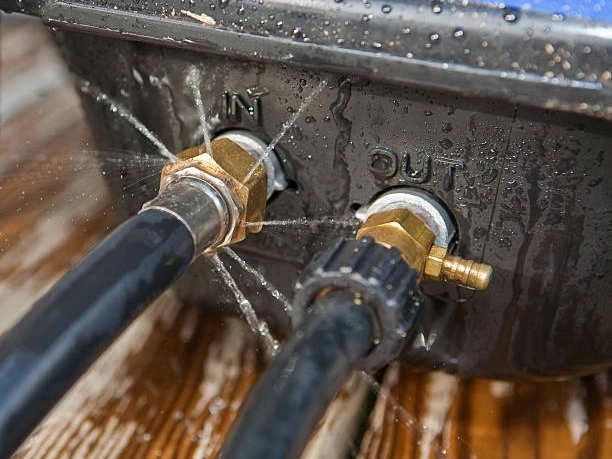
Even with the right technique, you might encounter issues. We’ve seen it all, and these are the most frequent problems and our expert solutions.
| Issue | Common Cause | Our Solution |
| Leaking at the Connection | Damaged or missing O-ring/washer; loose connection; damaged threads. | Check and replace the O-ring. Ensure the connection is hand-tight. If threads are stripped, a new fitting or hose may be needed. |
| Pressure Loss | Air in the line; a leak; kinked hose. | Purge the air by letting water run through the garden hose before connecting. Check for leaks and ensure the hose is unkinked. |
| Hose Won’t Connect | Incompatible fittings (M22 vs. quick-connect); cross-threaded connection. | Verify that your fittings are compatible. We sell a variety of pressure washer hose fittings and adapters to solve this. Ensure you’re threading the connections straight to avoid cross-threading. |
| Hose Bursts | Damaged hose; pressure exceeds the hose’s rating; a blocked nozzle. | Inspect your hose regularly for wear and tear. Always use a hose with a pressure rating higher than your machine’s output. Never operate the machine with a blocked nozzle. |
The Importance of Proper Connections
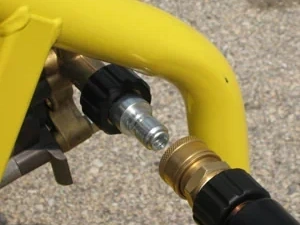
You might think that how to connect a pressure washer hose is just about preventing a messy leak, but it’s so much more. A correctly connected system ensures:
- Optimal Performance: A secure, sealed connection maintains the full pressure of the water, giving you maximum cleaning power. Any leaks or air in the system will reduce your machine’s efficiency.
- Safety: High-pressure water can be dangerous. A loose or improperly connected hose can whip around or detach unexpectedly, causing serious injury.
- Longevity of Your Equipment: By preventing leaks and pressure fluctuations, you reduce the strain on your pressure washer’s pump, extending its lifespan.
Conclusion
As a leading supplier of pressure washer hoses, we understand the value of a reliable, secure connection. We believe that with the right knowledge and quality products, your cleaning tasks can be safe, efficient, and even enjoyable. If you have any further questions about connecting your pressure washer hose or need help choosing the right fittings, feel free to reach out. We are always here to help you get the job done right.

